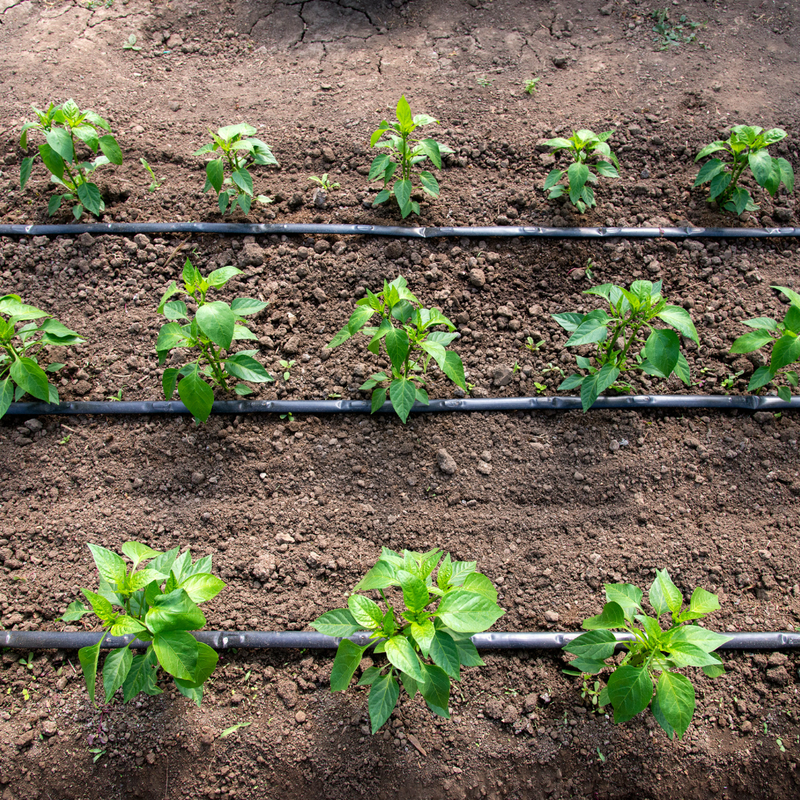Top 5 Reasons Why Irrigation Might Not be Your Go to Adaptation Solution
By Dr. Khalid Hassaballah, With contributions from the IGAD Climate Change Technical Working Group

As the impacts of climate change become more apparent, communities around the world are facing the need to adapt in order to ensure their survival and thrive amidst changing conditions. One commonly debated adaptation solution is irrigation, which involves the artificial application of water to land for agricultural purposes.
While irrigation has been used for centuries to increase crop yields and support food production, it may not be the most effective or sustainable solution in all situations.
It can also pose threats to water resources if not managed properly. In this article, we outline the top five reasons why irrigation might not be your go-to adaptation solution.
- Depletion of water sources
One of the primary challenges associated with irrigation is the availability and scarcity of water resources. In many regions, water scarcity is a growing concern due to population growth, urbanization, over-extraction, and unsustainable agricultural practices. Implementing irrigation systems, if not properly regulated, may exacerbate this issue by increasing the demand for water. Over-pumping of groundwater can result in the lowering of water tables, causing wells to dry up and reducing the availability of water for both agricultural and domestic use.
Additionally, climate change could contribute to an increase in temperatures and evapotranspiration and a decrease in precipitation. This will add additional pressure to withdraw irrigation water from some already overexploited groundwater aquifers, where the rate of water recharge is lower than the withdrawal rates. These and other water issues exacerbated by climate change present a serious concern because, on average, irrigated agriculture yields are often double those of rainfed agriculture.
Reducing irrigation withdrawals could extend the lifespan of the groundwater aquifers but would reduce agricultural productivity and further complicate the challenge of food security.
Increasing irrigation efficiency by adopting new irrigation technologies and increasing water storage through rainwater harvesting practices and artificial recharge of groundwater aquifers during wet seasons are some of the common adaptation measures to cope with droughts and improving sustainability of groundwater resources.
Additionally, in areas where water resources are limited, it may be more prudent to explore alternative agricultural practices that require less water or can function efficiently with the available resources.
2. Water quality degradation
Poor irrigation management can lead to the accumulation of salts and chemicals in the soil and water. This process is known as salinization or waterlogging.
When excessive water is applied, it can cause the water table to rise, bringing salt to the surface. The accumulation of salts in the soil can make it less fertile and hinder crop growth.
Reliance on the use and reuse of saline drainage waters generated by irrigated agriculture seems inevitable for irrigation. Excessive use of irrigation water coupled with inadequate drainage systems will cause land degradation and water quality deterioration. Therefore, irrigation without an appropriate drainage system will lead to the buildup of salts in the soil and can develop perched aquifer due to a very low leaching fraction of the soil layers exacerbated by solidity.
3. Ecosystem disruption
While irrigation may provide short-term benefits by increasing agricultural productivity, it can also have long-term adverse environmental impacts. Diverting water from natural sources for irrigation can disrupt the natural flow of rivers, streams, and wetlands, affecting the ecosystems dependent on these water bodies. Reduced water flows can harm aquatic habitats, affect fish populations, and lead to the loss of biodiversity. Excessive irrigation can lead to waterlogging and salinization of soil, making it less fertile over time. Furthermore, irrigation water runoff can carry sediment, nutrients, and agrochemicals into rivers and lakes, causing water pollution and ecological imbalances. These issues not only degrade the local environment but also adversely impact downstream ecosystems. Therefore, it’s crucial to consider these environmental repercussions while evaluating the suitability of irrigation as an adaptation solution.
4. Competition for water resources
Irrigation consumes a significant portion of the available freshwater resources. As water demands for agriculture increase, conflicts can arise between different users, such as agriculture, hydropower, industry, and municipal. This competition for water resources can lead to social and economic tensions, particularly in water-scarce regions, potentially leading to conflicts over water rights and availability.
5. Energy consumption and greenhouse gas emissions
Many irrigation systems require energy to pump and distribute water. Large-scale irrigation projects often rely on fossil fuel-powered pumps, which contribute to greenhouse gas emissions and air pollution. Additionally, the construction and maintenance of irrigation infrastructure can have associated environmental impacts.
To address these challenges and make irrigation a more sustainable and viable adaptation solution, there are various strategies that can be implemented:

- Use efficient modern irrigation technologies, such as drip and sprinkler irrigation systems, that minimize water loss through evaporation and runoff.
- Improved water management practices, such as irrigation scheduling, understanding crop water requirements to know when and how much water should be applied to crops and improving water supply systems.
- Implementing water conservation measures to reduce water loss. These include water metering, water accounting and loss control, costing and pricing, water-use regulation, and information and education.
- Integrated water resource management, which takes into account the needs of different sectors and ecosystems and promotes equitable and sustainable use of water resources.
- Investing in research and development to develop innovative irrigation methods that minimize water use and reduce environmental impacts.
- Optimal use of fertilizers, particularly those supplying nitrogen, to mitigate the adverse effects of soil and irrigation water salinity.
By combining these approaches, it is possible to maximize agricultural productivity while minimizing the negative effects of irrigation on water resources. However, it’s important to carefully consider the local context and evaluate alternative adaptation strategies to ensure long-term resilience and the well-being of both ecosystems and people.
